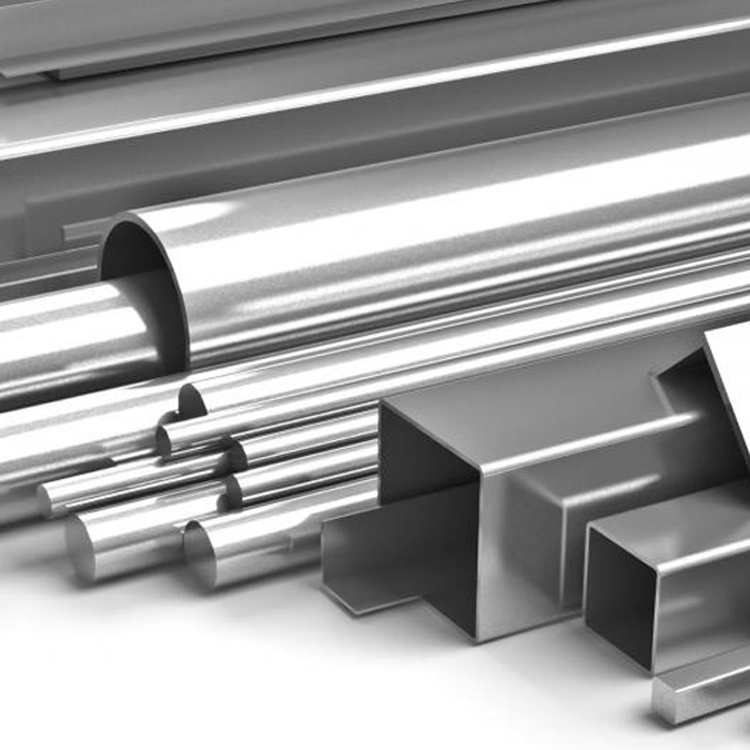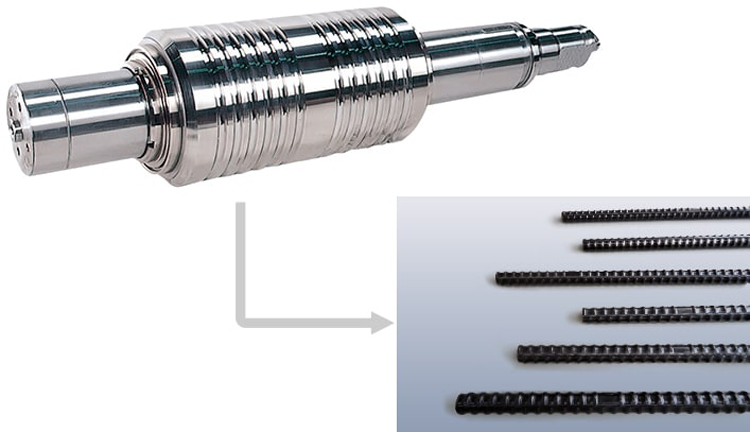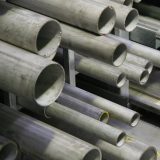What is the difference between 201 stainless steel and 304 stainless steel?
 What is the difference between 201 st...
What is the difference between 201 st...The fatigue intensity of materials is extremely sensitive to various external factors and internal factors. External factors include the shape and size of the parts, surface smoothness, and use conditions. The internal factors include the ingredients of the material itself, the state, purity, and residual stress. The subtle changes in these factors will cause fluctuations or even greatly changes in material fatigue performance.
The impact of various factors on fatigue intensity is an important aspect of fatigue research. This research will provide a basis for the reasonable structural design of parts, the correct selection of materials and reasonably formulating various hot and cold processing processes to ensure that the parts have high fatigue performance of fatigue performance Essence.

The fatigue intensity mentioned in the conventional is measured by carefully processed smooth samples. However, the actual mechanical parts inevitably exist in different forms of gaps, such as steps, key slots, threads, and oil holes. The existence of these gaps causes stress concentration, making the maximum actual stress of the gap root is far greater than the nominal stress that the parts bears, and the fatigue destruction of the parts often starts here.
Theoretical stress concentration coefficient KT: Under the ideal elastic conditions, the ratio of the maximum actual stress of the gap root by the elastic theory is obtained by the elastic theory.

Effective stress concentration coefficient (or fatigue stress concentration coefficient) KF: The ratio of fatigue limit σ-1 of the fatigue limit of smooth samples to the gap sample fatigue limit σ-1N.
The effective stress concentration coefficient is not only affected by the size and shape of the component, but also the influence of various factors such as the physical properties, processing, and thermal treatment of materials.
The effective stress concentration coefficient increases with the sharpness of the gap, but is usually less than the theoretical stress concentration coefficient.

Due to the unevenness of the material itself and the existence of internal defects, the increase in size increases the probability of material destruction, thereby reducing the fatigue limit of the material. The existence of the size effect is an important problem in the use of fatigue data measured by the laboratory small test samples to large -sized actual parts. Because it is impossible to put the stress concentration, stress gradient, etc. on the actual size parts, etc. The small sample is reproduced, resulting in the disconnection between the results of the laboratory and the fatigue destruction of certain parts.

There is always uneven machining marks on the surface of the machine processing. These traces are equivalent to a small gap, causing stress concentration on the surface of the material, thereby reducing the fatigue strength of the material. The test shows that for steel and aluminum alloy, rough processing (coarse car) is compared with vertical fine polishing, the fatigue limit is reduced by 10%-20%or more. The higher the strength of the material, the more sensitive it is to surface smoothness.
In fact, no parts are working under the absolute constant stress range. The overload and secondary load in the actual work of the material will affect the fatigue limit of the material. Tests show that the material generally exists with overload damage and secondary load exercise.
The so -called overload damage refers to the decline in material fatigue limit after the load runs under the load higher than the fatigue limit of the fatigue limit. The higher the overload, the shorter the week required to cause damage.

In fact, under certain conditions, the overload of a small number of times will not only cause damage to the material. Due to the effects of deformation, tip tip passivation, and residual compression stress, it will also strengthen the material, thereby improving the fatigue limit of the material. Therefore, some supplements and amendments to the concept of overload damage.
The so -called secondary exercise refers to the phenomenon that the material fatigue limit is increased after running a certain week after a certain week after the stress level below the fatigue limit but higher than the limit of a certain limit. The effect of the secondary exercise is related to the performance of the material itself. Generally speaking, the exercise cycle should be longer, and the exercise stress should be higher.

The fatigue strength of the material has a close relationship with the tensile strength under certain conditions. Therefore, under certain conditions, the alloy elements that can improve the tensile strength can improve the fatigue strength of the material. In comparison, carbon is the most important factor affecting the strength of the material. Some impurities that form mixed objects in steel have adversely affected fatigue intensity.
Different thermal treatment states will obtain different micro -tissues. Therefore, the effects of thermal treatment on fatigue intensity are essentially the impact of micro -tissue. Due to the different heat treatment, the same ingredient material can get the same static strength, but due to the different tissue, the fatigue strength can be changed within a considerable range.

When the same intensity level, the fatigue strength of the sheets is obviously lower than the granular pearl light. The same is granular pearl light, the smaller the carbonic particles, the higher the fatigue strength.
The impact of micro -tissue on material fatigue performance is not only related to the mechanical performance characteristics of various organizations itself, but also related to the distribution characteristics of the grain size and composite organizations. Refining grains can improve the fatigue strength of the material.

The mixed object itself or the pores produced by it are equivalent to a small gap. Under the action of the alternating load, stress concentration and strain concentration will be generated, which becomes a crack source for fatigue and fracture. The impact of miscellaneous objects on fatigue intensity depends not only on the type, nature, shape, size, quantity, and distribution of mixed objects, but also depends on the strength level of the material and the level of external stress and status.
Different types of mixed objects have different mechanical and physical properties, different from the performance of the mother material, and have different impact on fatigue performance. Generally speaking, the translucent plastic blends (such as sulfide) have a small impact on the fatigue performance of steel, while crispy mixed materials (such as oxides, silicate, etc.) have great harm.
Small effects that are less affected than mixed with the substrate expansion coefficient (such as sulfide) due to the pressure stress in the substrate, and the mixed objects (such as aluminum oxide, etc.) that are smaller than the substrate expansion coefficient (such as aluminum oxide) have a large impact due to the stress in the substrate.
The tightness of binding of mixed objects and mother material also affects fatigue intensity. The sulfide is easy to deform, and the binding of the mother material is closely bonded, and the oxide is easy to leave the mother material, causing stress concentration. It can be seen that in terms of the type of miscellaneous objects, the impact of sulfides is less, while oxides, nitride and silicate are more harmful.

Under different loading conditions, the impact of miscellaneous materials on material fatigue performance is also different. Under high load conditions, whether or not there is a miscellaneous load, the external load is enough The fatigue limit of the material, the presence of the mixed objects, causing local strain concentration to become a control factor for plastic deformation, which strongly affects the fatigue strength of the material. In other words, the existence of miscellaneous objects is mainly to affect the fatigue limit of materials, and the effect of fatigue intensity under high stress conditions does not have obvious effects.
The purity of the material is determined by the melting process. Therefore, the use of purification and smelting methods (such as vacuum melting, vacuum qi, and electric residue heavy melting, etc.) can effectively reduce the impurities in the steel and improve the fatigue performance of the material.
In addition to the surface smoothness mentioned before, the influence of the surface state also includes the changes in the mechanical properties of the surface and the effect of residual stress on fatigue strength. The changes in the mechanical properties of the surface layer can be caused by different surface chemical composition and tissue, or it can be caused by the surface -based changes.
In addition to increasing the abrasion resistance of parts in carburizing, nitride, and carbon nitrogen penetration, it is also an effective means to increase the fatigue strength of parts, especially to increase corrosion resistance and bitterness.

The impact of surface chemical thermal treatment on fatigue intensity depends on the loading method, carbon nitrogen concentration, surface hardness and gradient, surface hardness to cardiac hardness, deepening of layers, and surface treatment of the residual stress, and Factors such as distribution. A large number of experiments show that as long as the processing gap is processed first and then chemically heat treatment, the greater the gap is, the more the fatigue intensity increases.
In different loading methods, the impact of surface treatment on fatigue performance is also different. When the axial is loaded, due to the lack of deeper distribution of stress, the stress on the surface and layer is the same. In this case, surface treatment can only improve the fatigue performance of the surface layer. Because the heart material is not strengthened, the fatigue strength is limited. Under bending and reversing conditions, the distribution of stress is concentrated on the surface, and the residual stress formed on the surface treatment and this external stress are superimposed to reduce the actual stress on the surface. At the same time, due to the enhancement of the surface materials, it can effectively improve bending and bending and Fatigue intensity under the condition.
Contrary to chemical thermal treatment such as carburizing, nitride, and carbon nitrogen penetration. If the parts are decarbarized during thermal treatment, the intensity of the surface layer will be reduced, and the fatigue strength of the material will be greatly reduced. Similarly, the surface plating (such as plating CR, Ni, etc.) is due to the gap effect of the cracks in the coating, the residual tensile stress caused by the plating layer in the substrate metal, and the immersion of hydrogen in the electroplating process to Essence.

The thin shell quenching of inductive quenching, surface flame quenching, and low -quenching steel can obtain a certain deep surface hardness layer and form favorable residual compression stress on the surface layer. Therefore, it is also an effective method for improving the fatigue intensity of parts.
The surface rolling and spraying are treated. Because it can form a certain depth of deformation sclerosis layer on the surface of the sample, and at the same time, the surface is residual compression stress, which is also an effective way to improve fatigue strength.
 What is the difference between 201 st...
What is the difference between 201 st... Why is 316 stainless steel better tha...
Why is 316 stainless steel better tha... 400 series stainless steel science
40...
400 series stainless steel science
40... How to distinguish the processing tec...
How to distinguish the processing tec... Non-standard design materials of bras...
Non-standard design materials of bras... What type of titanium alloy does Tc4 ...
What type of titanium alloy does Tc4 ...